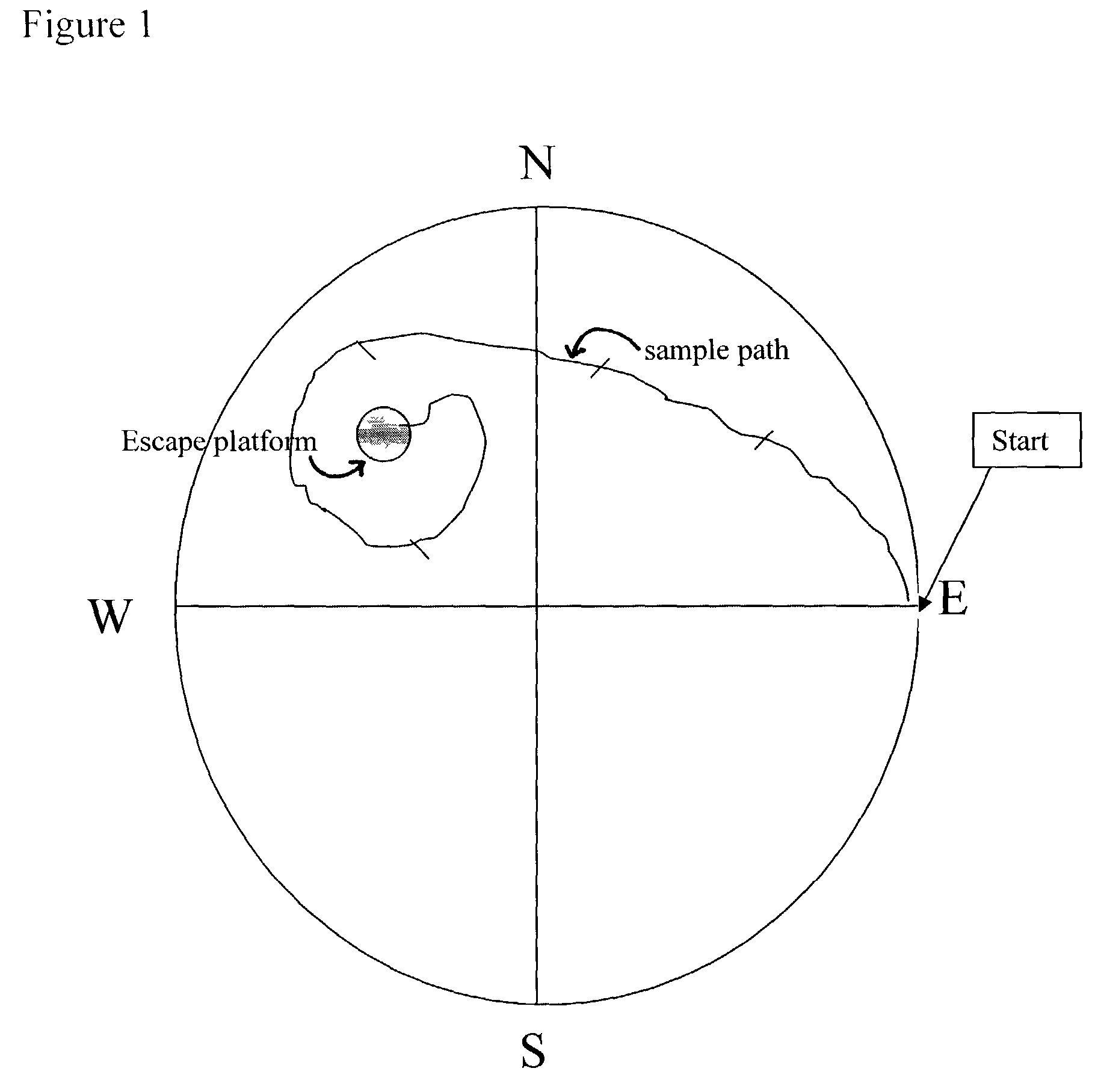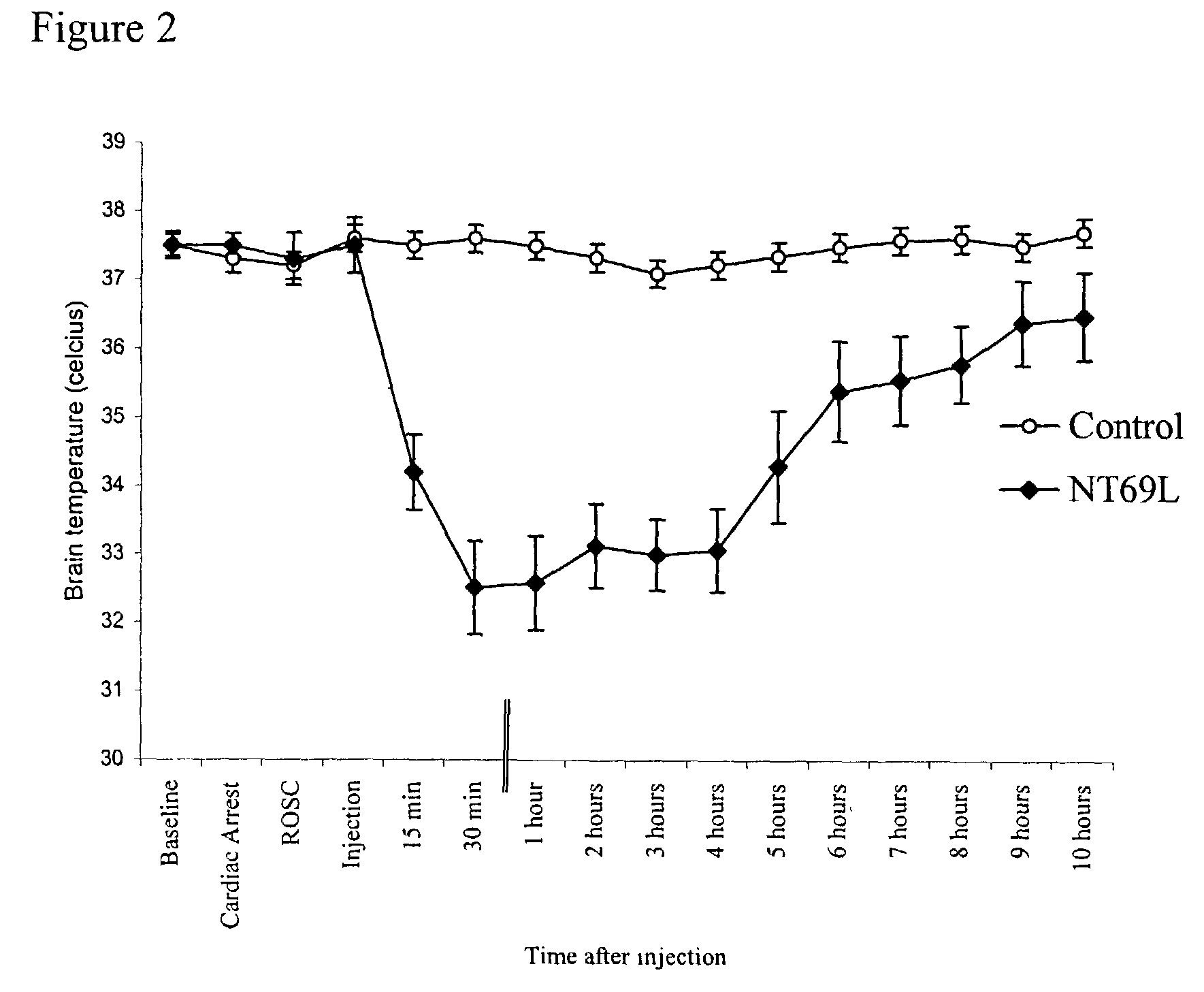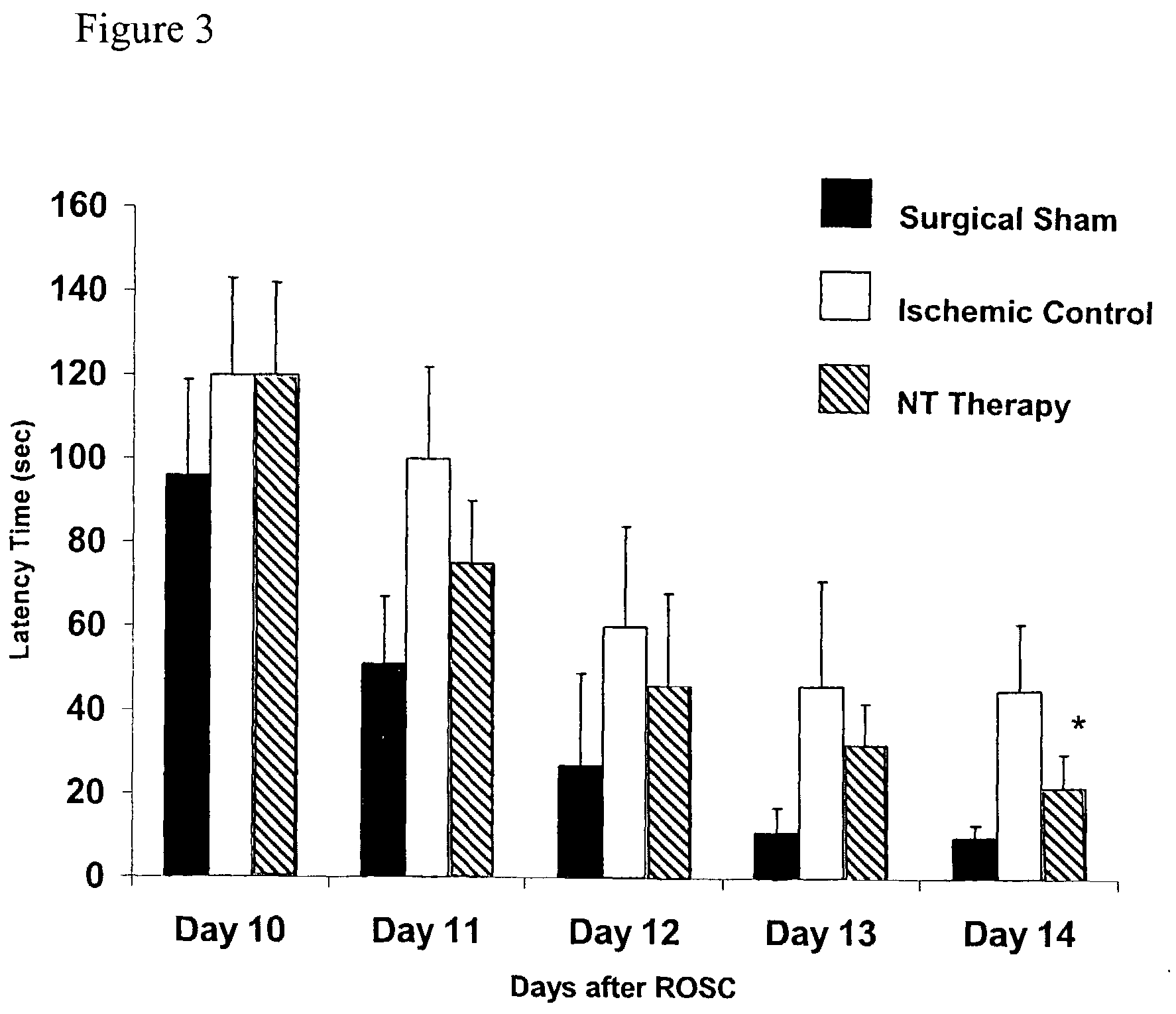Methods of treating cerebral ischemia
a cerebral ischemia and brain disease technology, applied in the field of treating cerebral ischemia, can solve the problems of brain damage, slow and inefficient method of promoting heat loss, brain damage,
- Summary
- Abstract
- Description
- Claims
- Application Information
AI Technical Summary
Benefits of technology
Problems solved by technology
Method used
Image
Examples
example 1
Treatment of Hypoxic Ischemia Caused by Asphyxial Cardiac Arrest using Neurotensin Analog NT69L
[0047]The purpose of this study was (1) to determine whether intravenous administration of the neurotensin analog NT69L to rats after resuscitation from asphyxial cardiac arrest would induce hypothermia and (2) to assess neurological outcome of rats injected with NT69L to determine whether NT69L administration after asphyxial cardiac arrest would reduce brain damage caused by the asphyxial cardiac arrest and reperfusion compared to rats not administered with NT69L.
I. Animal Subjects and Preparation
[0048]Sixteen male Sprague-Dawley rats (Harlan; Madison, Wis.) weighing 300±50 grams were randomized to a control group (saline) or treatment group (NT69L) after resuscitation from asphyxial cardiac arrest. The outcome model of asphyxial cardiac arrest in rats was used to induce the cerebral insult in all rats (Katz et al., Outcome model of asphyxial cardiac arrest in rats, J. Cereb. Blood Flow M...
example 2
Neurotensin Analog NT77 Induces Regulated Hypothermia
[0060]The purpose of this experiment was to determine whether the hypothermic response elicited by NT77 (a neurotensin analog that crosses the blood brain barrier and induces hypothernia) is mediated via a regulated mechanism (i.e., via reduction in set-point) or by a forced mechanism. During regulated hypothermia, there is little or no increase in metabolic rate or reduction in heat loss (e.g., peripheral vasoconstriction) that occur when the hypothermia is forced (see, e.g., Gordon, C. J., A review of terms and proposed nomenclature for regulated vs. forced changes in body temperature, Life Sciences 32, 1285-1295, 1983 and Gordon, C. J., Temperature Regulation in Laboratory Rodents, New York:Cambridge University Press, 1993), and a regulated hypothermic response is characterized by a behavioral thermoregulatory response to seek cold temperatures concomitant with a decrease in core temperature. Therefore, the hypothermic mechanis...
example 3
Treatment of Hypoxic Ischemia Caused by Asphyxial Cardiac Arrest Using Neurotensin Analog NT77
[0084]The purpose of the experiment was (1) to determine whether NT77 could reduce brain damage due to reperfusion injury after cerebral ischemia caused by asphyxial cardiac arrest and (2) to determine whether regulated hypothermia induced by NT77 after reperfusion from asphyxial cardiac arrest would alter malondialdehyde (MDA) levels in the brain during reperfusion.
[0085]This experiment was performed using materials and methods similar to those described in Example 1. The outcome model of asphyxial cardiac arrest in rats described in Example 1 was used to induce the cerebral insult in all rats. However, instead of NT69L being used as the neurotensin analog, NT77 was used. Also, in addition to a control group (saline), a treatment / regulated hypothermia group (NT77), and a surgical sham group (no asphyxial cardiac arrest), two additional test groups were added. A forced brief hypothermia gro...
PUM
| Property | Measurement | Unit |
|---|---|---|
| Dimensionless property | aaaaa | aaaaa |
| Dimensionless property | aaaaa | aaaaa |
Abstract
Description
Claims
Application Information
 Login to View More
Login to View More - R&D
- Intellectual Property
- Life Sciences
- Materials
- Tech Scout
- Unparalleled Data Quality
- Higher Quality Content
- 60% Fewer Hallucinations
Browse by: Latest US Patents, China's latest patents, Technical Efficacy Thesaurus, Application Domain, Technology Topic, Popular Technical Reports.
© 2025 PatSnap. All rights reserved.Legal|Privacy policy|Modern Slavery Act Transparency Statement|Sitemap|About US| Contact US: help@patsnap.com



